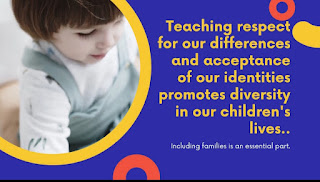Practicing nonviolent communication (NVC) in our relationships
People can point out many and many reasons to justify the origin of a conflict. Frequently we can hear about a strong or harsh tone of voice, a defiant attitude to communicate, offensive facial gestures, and so on. One of them could be a motive to begin violent communication. The mental state of the person is a potentially sensitive element here.
What is Nonviolent Communication (NVC)?
Nonviolent Communication (NVC) is a valuable approach to encourage support among communication and human connection developed by Marshall Rosenberg. The approach is grounded in Gandhi's principle of non-violence. Practicing NVC allows us to learn to hear our needs and the needs of others emphasizing deep listening and being compassionate and empathetic. NVC is powerfully transformative and often seen as a spiritual practice to develop skills for helping families and communities and contribute to the well-being of all of us.
NVC includes the clarification of what we observe, the emotions we are feeling, our values, and our perception of ourselves, and others. The approach will help us to avoid blame, judgments, and other practices of conflict. NVC could be practiced in our relationships, work, and community settings by all.
"ALL VIOLENCE IS THE RESULT OF PEOPLE TRICKING THEMSELVES INTO BELIEVING THAT THEIR PAIN DERIVES FROM OTHER PEOPLE AND THAT CONSEQUENTLY, THOSE PEOPLE DESERVE TO BE PUNISHED."
NVC includes the clarification of what we observe, the emotions we are feeling, our values, and our perception of ourselves, and others. The approach will help us to avoid blame, judgments, and other practices of conflict. NVC could be practiced in our relationships, work, and community settings by all.
Putting NVC into practice
Some years ago a friend of mine told me about a conflict with a coworker. My friend reckoned about the particular and unpleasant kind of talking like she was yelling instead of talking. She was an intelligent woman and a competent professional, but she provoked many conflicts because of her offensive and sometimes violent communication. One day she asked my friend for a favor. She talked to my friend with an intimidating attitude as she was used to. My friend reacted so bad to the words that refused to help her. She became angry at my friend. From that moment, the communication between the two women became vanished. They did not speak to each other for two years. Sometime later my friend knew that her coworker was suffering from mental health and physical health conditions, but when she began to receive medical treatment for her condition, her temper improved.Obviously, my friend could do better. Although, it is difficult to deal with these conflicts or similar. The experience of my friend, instead of reacting badly to her colleague's intimidating temper, she could use strategies for nonviolent communication as a conflict resolution practice. My friend could observe the behavior and avoid judgment. Even recognize that violent behavior and communication always have a reason. I suggest identifying and sharing our feelings seeking peace and assuming responsibility for it by being empathetic and honest. Another strategy is to connect with the needs of others being neutral and objective. It is effective because it helps us to avoid interpretations and communicate effectively. We could not expect to practice a strategy to be effective for the first time, but with patience and empathy, it would have a positive effect eventually.
Four Components of NVC
The writings of Marshall B. Rosenberg emphasized expressions avoiding judgment, but emphasizing sincere communication, maturity, positive language, and identifying true feelings, among others. Competent communicators need to be aware of these crucial keywords.
NVC focuses on three aspects of awareness and communication:
👉self-empathy
NVC focuses on three aspects of awareness and communication:
👉self-empathy
👉empathy for others
👉honest self-expression
These three aspects intend to find a connection between your body, feelings, emotions, needs, and values to help put our attention on what we listen to, clarifying and understanding people seeking connections and honestly taking responsibility for our experiences.
NVC contains four basic components:
👉honest self-expression
These three aspects intend to find a connection between your body, feelings, emotions, needs, and values to help put our attention on what we listen to, clarifying and understanding people seeking connections and honestly taking responsibility for our experiences.
NVC contains four basic components:
👉Observations
👉Feelings
👉Needs/Values
👉Requests
These four components make an essential distinction when practicing NVC. They are used when we focus on the three aspects of NVC of awareness and communication stated above. Observations are distinct from evaluations, judgments, and interpretations. In other words, observations are neutral and objective. Feelings are distinct from perceptions, which means that we express pure emotions rather than thoughts of what people are doing to us. Needs/Values are distinct from strategies. It considers the energy that motivates us. Requests are distinct from demands focusing on affirmative, concrete, and specific actions.
Practicing NVC in our relationships makes efficient communication contributes greatly to the social, emotional, and cognitive development that leads to success and understanding between people avoiding and minimizing conflictive experiences. Positive thinking leads to effective communication. We need to be aware and practice it as often as possible. Practice will make our relationships healthy, peaceful, and caring.
References
What is Nonviolent Communication? | Center for Nonviolent Communication. (n.d.). www.cnvc.org. Retrieved January 17, 2021, from https://www.cnvc.org/learn-nvc/what-is-nvc
"ALL VIOLENCE IS THE RESULT OF PEOPLE TRICKING THEMSELVES INTO BELIEVING THAT THEIR PAIN DERIVES FROM OTHER PEOPLE AND THAT CONSEQUENTLY, THOSE PEOPLE DESERVE TO BE PUNISHED."
-Marshall B. Rosenberg
_______________________
Diana A. Rivera is an Early Childhood Educator, with graduate studies in Educational Psychologist, and author of Be the voice for children. Diana believes and commits to the healthy development, growth, well-being, and learning of all children. The blog posts share ideas and knowledge about educational psychology, child and brain development, parenting, diversity, effective teaching practices, early childhood education, and care to support the empowerment of children and families.










